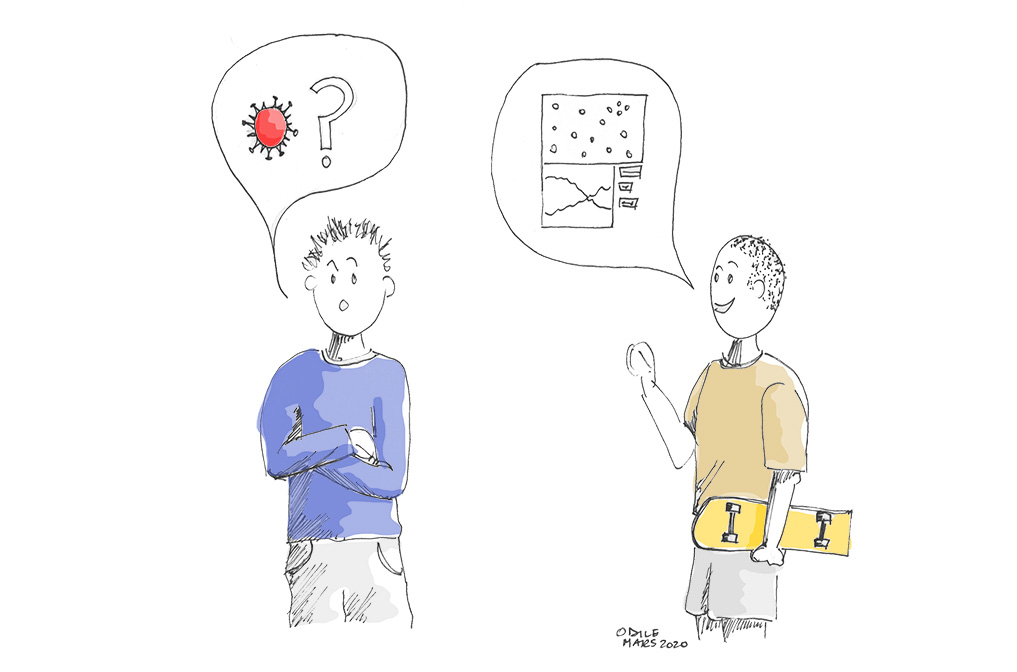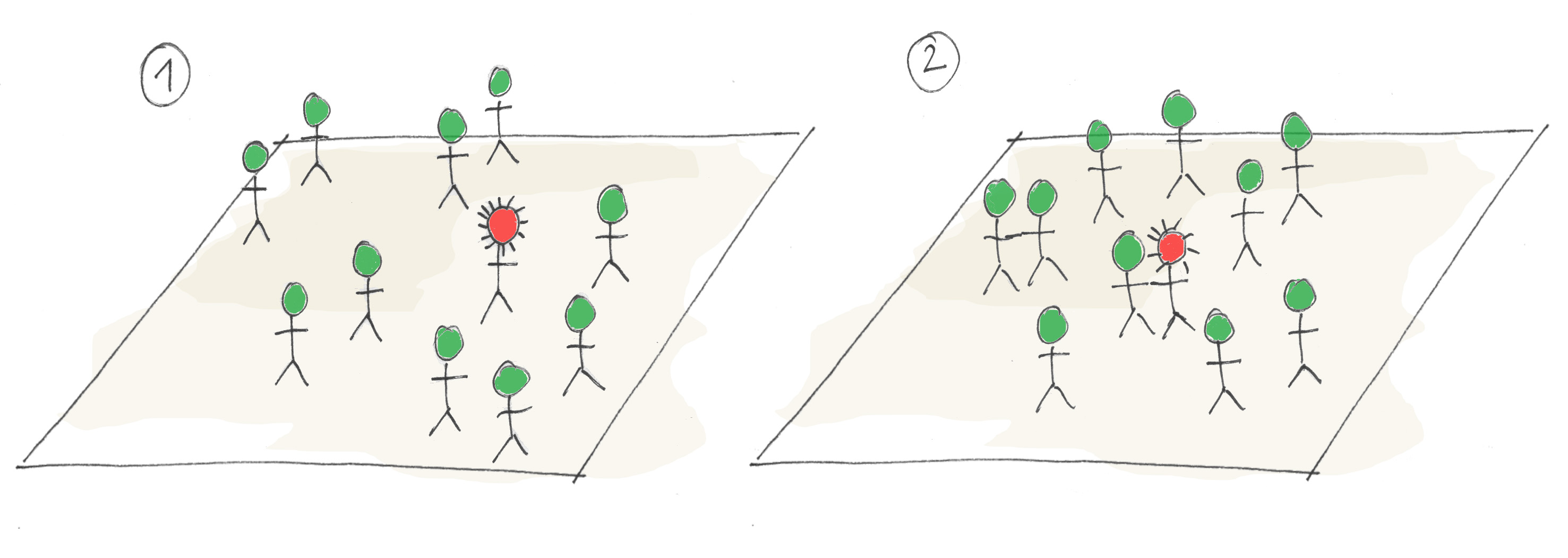A lot of us worldwide are wondering about the current COVID-19 epidemic, and in particular about what individual and collective measures to put in place in order to limit the propagation of the virus.
This interactive website was created by a team of researchers from different disciplines, all specialists of complex systems modelling, willing to mobilise their skills to answer the questions we have ourselves and that you may have as well about the COVID-19 epidemic. Our project aims to answer these questions through modelling and simulation.

The objectives of CoVprehension are simple:
- Comprehension (the propagation of the virus, the actions put in place)
- Objectification (giving a more concrete shape to this event which is bigger than us and can be overwhelming)
- Visualisation (showing the mechanisms at play)
- Identification (the essential principles and actions to put in place)
- Do something (overcoming fears and anxieties to become actors in the epidemic)
Our operating mode is modelling. To each question asked, we will try to answer with one or several models, in the spirit of the answers already published on the website.
This epidemic is complex. It is bigger than us and that can be overwhelming, but we are (willingly or not) the main actors within this crisis. Therefore, thinking and learning about it, debating it and experimenting on models are a good start to fight it.
Challenge us, ask you questions here!
Before we get stuck in, let’s recap on modelling and models first.
By definition, a model is a (sometimes extreme) simplification of reality. Besides, each model is built with a particular objective in mind.
For each of the models, some simplifications had to be made. Therefore, some processes (for example, social distancing is a process which is introduced in the models of question 1 but does not appear in the models of question 2) and parameters (for example, the incubation time and the contagious rate are parameters) had to be left out.

When building models that have many processes and parameters, it becomes harder to understand their behaviour, robustness, or the validity of the results they produce. Therefore we start with simplified models, then progressively add new parameters and processes.

These are caveats we have to take into account when studying this epidemic in order to better understand it.
The models developed in response to questions 1 to 3 are examples of such models. They are the building blocks that will allow us to respond to future questions more comprehensively. Except where explicitely noted, none of the models developed on this website aim to produce predictions or forcasts. The objective of our models is first of all to highlight the important mechanisms involved in the COVID-19 epidemic, the mechanisms on which we have traction, as a society as well as as individuals.